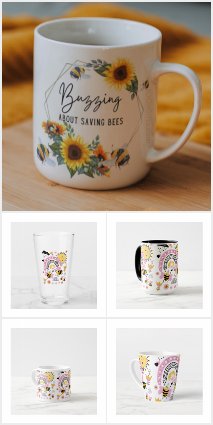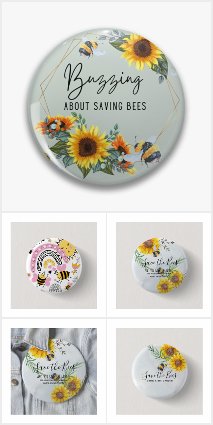Philip Chandler
paraphrased
BEE KEEPING EQUIPMENT
After more than half a century of decline, beekeeping has suddenly regained popularity.
People appear to have an almost primal impulse to help and nurture this extremely important bug that despite all our scientific achievements we still do not fully understand but know we cannot survive without.
Because beekeepers conduct bizarre things with strange wooden boxes of bees while clad in sartorially dubious clothes, the media has always portrayed them as harmless, doddery old men (mainly). A new urgency about maintaining our honeybees for their crucial role as pollinators as well as their own sake is in the air, and more women and young people are becoming interested in mastering this ancient craft
When people first consider keeping bees, they generally contact their local Bee Keepers Association first. A warm welcome and lots of technical chit-chat from the 'old hands' is almost certain. The beautiful catalogues featuring sparkling equipment are seductive, but the accompanying price tags may be very shocking.
Many people are turned off by now.
But this need not be. Being a beekeeper doesn't have to be expensive. It is possible to accomplish this virtually for free, as I will show you!
The next challenge for aspiring beekeepers is lifting and carrying heavy weights. It's not for the faint-hearted or those unfamiliar with box-shifting in that class.
The least fit person can become a beekeeper, as I will demonstrate. With my system, a wheelchair user could work a hive.
Storage space is another issue that may dampen the newbie's spirits. Using standard hives, you will inevitably gather "extras" - odd-shaped boxes, frames, roofs, extractors - that the "old hands" forgot to mention at that initial, exhilarating meeting. Folks, we're talking garage. That's right, everything can be stored inside the hives themselves if you follow my technique.
So, how do you become a beekeeper?
You'll need an old white shirt and gloves to start, as well as the consent of your roommates. So long as there is an abundance and variety of flowering plants starting in early spring, it doesn't matter where you live. Pollinators prefer the 'green desert' of modern industrial farmland to well-maintained urban gardens.
Like many newbie beekeepers, I started with a framed hive with sloped outer boxes. I soon acquired more and realised that if I wanted to keep going, I would have to build a massive shed to store all the extra woodwork and equipment - and find a way to pay for it all.
This innocent query led me on an adventurous voyage of reading, study, and experimentation that proved me decisively that no - beekeeping does not need to be complicated, expensive, or dependent on machine-made parts and equipment, and it does not need to be dependent on machine-made parts.
An old and basic beehive that requires little talent and only a few tools, I looked for an alternate way. Was this hive designed for modern beekeeping?
For the bees as well as the beekeeper, I believe I have perfected the top bar hive design after years of testing and experimentation.
So, top bar hives,
Simply a box with poles over the top for the bees to comb on. Miner's mine has a central door and two side doors for the colony to enter. Simple construction and management are the main principles of numerous variations on this topic. Nothing but the hive itself is needed for queen excluders, ekes and mouse guards. After an hour of leafing through supplier catalogues, wondering how you can possible afford beekeeping, you will be relieved!
With hand tools and recycled wood, you can build a top bar hive. With top bar beekeeping, there's no hard lifting after your hives are set up, and honey is harvested one-comb at a time, so it's perfect for persons with disabilities, bad backs, or a dislike of lifting boxes. A 'leave well alone' management technique allows the bees to build comb according to their own design without the restrictions of man-made wax foundation.
Where do you acquire your bees?
You can buy them, capture them, or adopt them! A swarm is by far the most fun to catch or lure. The sight of a swarm in flight is undoubtedly stunning. Their primary interest is finding a new location to reside, not stinging you. A nice-smelling, cosy beehive is likely to attract them. Many new beekeepers start by tempting a passing swarm with citronella or lemongrass oil, or by anointing the hive with pure beeswax, respectively.
A swarm can be captured by shaking a basket or box under their football-sized cluster on a tree branch. A cat in a tree isn't always easy, but it's rare.
A local beekeeper who will allow you visit and handle their bees is the best way to learn about keeping bees. These days are held in the spring, and allow newbies to view inside a hive and experience bees up up and personal.
stings? No matter how careful you are, you will get stung occasionally. Allergy symptoms include fainting, difficulty breathing, and collapse. However, it is possible for an experienced beekeeper to grow allergic to stings. You should carry Benadryl or an Epipen (adrenaline injection) or make sure that whoever you are with is prepared to cope with an emergency if you are sensitive to bee venom (approximately one in 200 people are).
For those interested in conservation, entomology, crop pollination and/or simply a love of honey, beekeeping is a fascinating hobby.
Now that bees are in jeopardy due to pollution, parasite mites and viruses, we need all the "natural" beekeepers we can get to help them repopulate. Then you can enjoy your own honey before the end of the summer!
The author's website, http://www.biobees.com, offers free DIY top bar hive blueprints as well as a support and discussion forum. This site also has The Barefoot Beekeeper.
Top bar hive design aspects worth highlighting in my version Easily built using low-cost, recycled components. Pallet wood can be reclaimed and untreated. All joints are bonded and fastened for durability. One person can easily lift and carry the hive when empty. This is because the box is attached to the legs. Simple woodworking skills are required to construct the hive. To remove the roof, you will need to undertake some heavy lifting.
"In my book, The Barefoot Beekeeper, I describe the top bar hive and its management and discuss the philosophy of natural beekeeping, in which we aim to work with the natural impulses and habits of the bees, respecting the integrity of the brood chamber, leaving them ample honey stores over winter and generally arranging things in order to cause their bees as little stress and disturbance as possible."
"In my book, The Barefoot Beekeeper, I describe the top bar hive and its management and discuss the philosophy of natural beekeeping, in which we aim to work with the natural impulses and habits of the bees, respecting the integrity of the brood chamber, leaving them ample honey stores over winter and generally arranging things in order to cause their bees as little stress and disturbance as possible."
BEE KEEPING EQUIPMENT

3 ways you can help rescue bees
 Bees pollinate one-third of the food that we consume; without them, we would be extinct. You may contribute to the cause by taking these three simple actions.
Bees pollinate one-third of the food that we consume; without them, we would be extinct. You may contribute to the cause by taking these three simple actions.1. Create a Bee Garden using plants that are beneficial to bees.
2. Fill a small dish halfway with clean water and set it aside as a Bee drinking bath. Make a swarming area with pebbles and stones for the bees to land on and drink from.
Visit my Bee Store for Bee awareness buttons, stickers, keychains and personalized gifts, accessories and decor.
This collection of adorable Save the Bee gifts, decorative items, and accessories has me buzzing with excitement. Text template fields allow you to include your own save the bees slogan, quote, amusing, friendly, or awareness-raising statement in addition to the default text template. What could be a better way to start your day than this? All of the items in the SaveBees store are decorated with adorable BEE drawings.
Bee enthusiasts, beekeepers, bee rescues, and bee fanatics will find something to their liking in this section. We must raise awareness about rescuing bees, protecting bees' habitat, planting bee-friendly flowers, allowing flowering weeds to develop, and providing bee resting locations, water, and room for all bees to thrive and establish hives. Join us!
The efforts of a slew of fantastic bee-friendly individuals have been spreading awareness, from the flightless bee with no foot to the courageous bee lady who saves and relocates bees while wearing no protective clothing!
She is very remarkable. You have the ability to BE wonderful as well. Find a BEE saving club to get bee photographs, photos, illustrations, and, most importantly, advice on how to protect and save bees and their colonies. Bumblebees, honey bees, and all other types of bees will thank you for getting it right this time. Spread the word about your love for bees far and wide. BEE lovers, have a wonderful BEE day.










